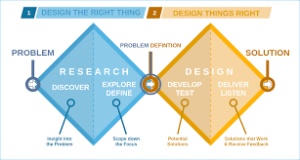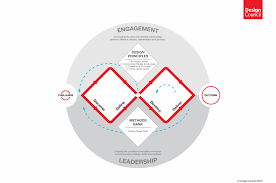This blog is a place for us to explore some of the early-stage ideas we are working on. So, with an acknowledgement that this is still half-formed, I wanted to write a little about our thinking around Design-centered AI in Healthcare. I also need to acknowledge that these thoughts are not mine alone – they are the results of lots of discussion, over many years, in the lab, and so I am presenting this as our collective thoughts.
The pace of technical development in AI is astonishing: every month seems to bring some new technical development, some new deep learning architecture, some new piece of MedTech. But, at the same time, the change in medicine seems to take place quite slowly. . Current clinical practice does not feel very different from 5 years ago, whilst during the same time period the iPhone has gone from v8 to v14 (and quadrupled the number of transistors). Whilst there may be many reasons for this here are many reasons for this includingslow translation and regulatory hurdles, we think there may be more reasons for this.
There is still a focus on using new technology to drive new MedTech; this isn’t surprising – new technology has always opened new medical possibilities. But that focus means that we end up thinking about uses for technology, rather than needs that could be served by technology. This is where design-centered AI and patient-centered AI are critical.

We refer to our attempt to change this as “Design-Centered AI”. We take an explicit design approach – based on work such as Donald Norman’s “Design of Everyday Things“, and pictured in the UK Design Council’s “Double Diamond” diagram – to try and understand and explore user-needs and put those needs at the fore of the work, while putting the technology in the background.
The other point to note is we talk about users, not patients. Obviously, many of our users are patients, but some of them might be caregivers and families, and some of our work is designed to be used by patients with staff, and so understanding staff views is important as well.
This sounds very simple but is a relatively new approach to designing MedTech products. There are many MedTech products that “work” very nicely…. but don’t solve a user problem. Existing approaches, such as patient involvement and engagement, are useful for helping us talk to patients, but don’t capture the iterative development that we need to explore, discuss and refine products.
We are not the only people working in this space: there are quite a few groups interested in exploring human-led approaches to technology, Imperial College London already has an existing healthcare/design group in the Helix Centre, this work, and we have had some useful conversations with several people, including Careful Industries. And then there was this recent twitter thread discussing some of the same issues.
As we said at the beginning, this work is still at an early stage, and will evolve over time. For now, we are exploring the work in a small, BRC-funded project, MicroLens, which explicitly uses the design approach to work with users to explore work around patient access to imaging. If you are interested in hearing more, then look at the MicroLens blog post, follow our work in the lab, or pick-up the discussion on Twitter (@Matthwilliams).
